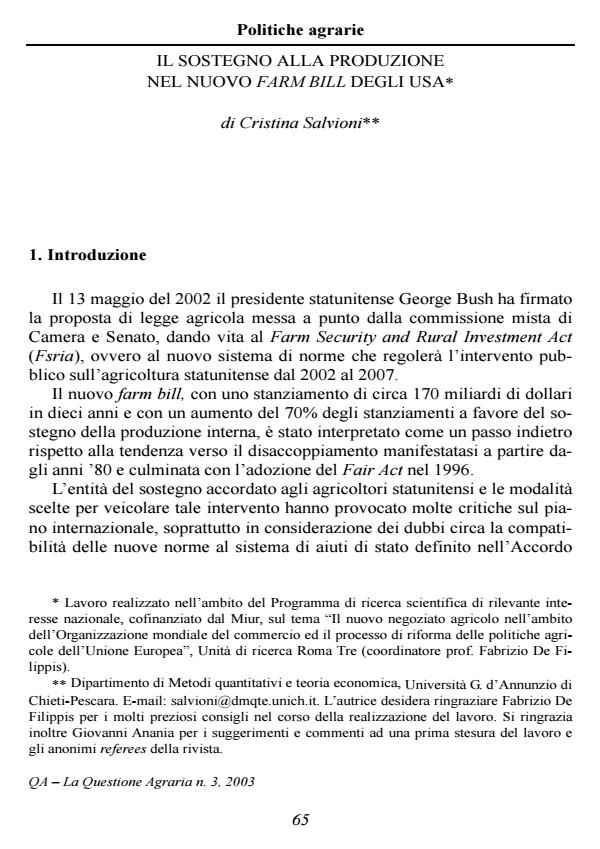Il sostegno alla produzione nel nuovo farm bill degli Usa
Journal title QA Rivista dell’Associazione Rossi-Doria
Author/s Cristina Salvioni
Publishing Year 2004 Issue 2003/3
Language Italian Pages 35 P. File size 235 KB
DOI
DOI is like a bar code for intellectual property: to have more infomation
click here
Below, you can see the article first page
If you want to buy this article in PDF format, you can do it, following the instructions to buy download credits

FrancoAngeli is member of Publishers International Linking Association, Inc (PILA), a not-for-profit association which run the CrossRef service enabling links to and from online scholarly content.
Cristina Salvioni, Il sostegno alla produzione nel nuovo farm bill degli Usa in "QA Rivista dell’Associazione Rossi-Doria" 3/2003, pp , DOI: